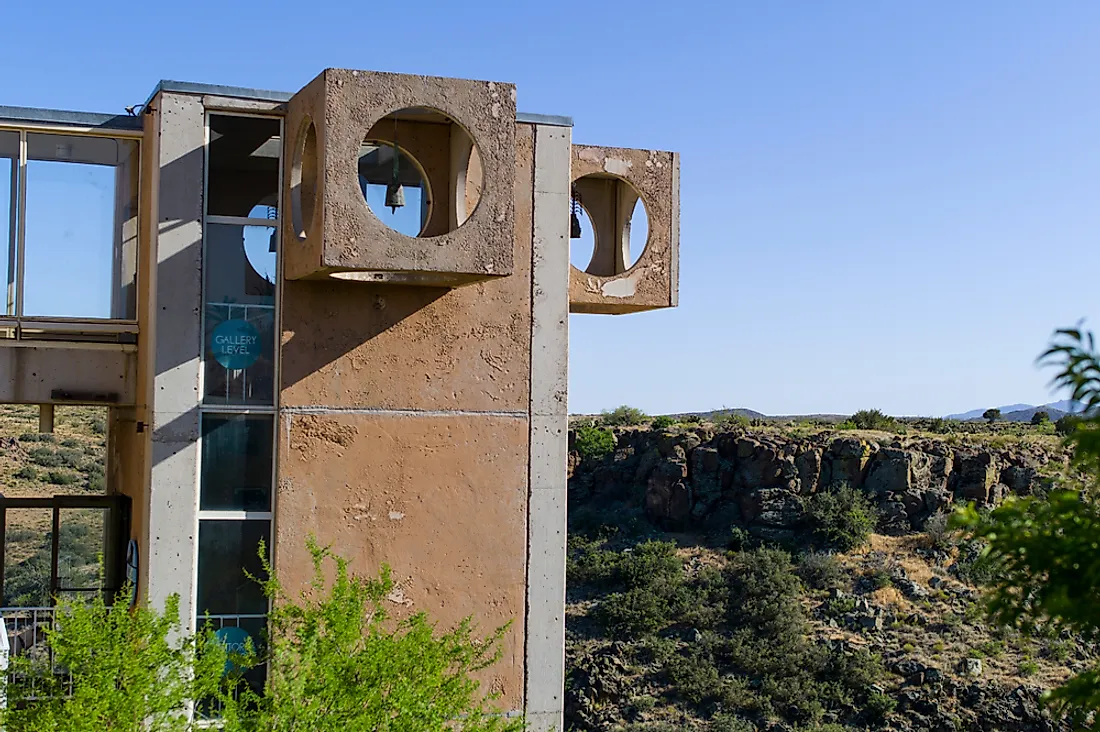What is Arcology?

The concept of "arcology" was created by Italian architect Paolo Soleri to refer to urban architecture that is designed with ecology in mind. Arcology is also concerned with architectural designs and design principles that have a low impact on the environment. The word itself is a portmanteau of two words: ecology and architecture.
Paolo Soleri came up with the idea back in 1969 in a bid to lessen the environmental impact of human settlement while still coming up with ways to provide the normal facilities such as agriculture. To this day, the idea has not been implemented in the world exactly as was envisioned. The closest representation of the idea has only been portrayed through fictional means such as books like the Neutronium Alchemist and The Water Knife.
Arcology as a Concept
As stated earlier, arcology seeks to come up with buildings that do not heavily impact ecosystems. The building itself could be self-sustainable in that it may use its own resources to cater to human needs such as climate control or sewage treatment. The nature of the design would make sure that living, public, and working spaces are within easy reach of one another. This also means that walking would be the main mode of transportation. To reduce energy usage, the buildings would use solar architectural strategies such as greenhouses, the apse effect, and others. In addition, these buildings might be designed using certain building and engineering strategies in massive projects in order to come up with simple but proven economies of scale.
One thing to note is that the idea was explored by other experts such as Frank Lloyd Wright and Buckminster Fuller. In the case of Wright’s concept, it was rather two dimensional and relied largely on road networks. Unfortunately for this idea, according to critics, Wright failed to account for fluid democracy as well as population growth. Unlike Wright’s proposal, Paolo’s was more three-dimensional and sought to solve the issue presented by two dimensional cities. By doing so, Paolo also solved the issues of energy and transportation.
Arcology in Real Life
Arcosanti
In the world, the concept has not been implemented exactly as envisioned by Paolo but some cities come close. An example is the town of Arcosanti, which is located in central Arizona some 70 miles from Phoenix. It was built in the 1970s as an arcology experiment. The city was designed by Soleri himself to demonstrate his idea. To this day, the city has thirteen major buildings and a varied population between 50 and 150 that is mainly made up of volunteers and students.
Most of the features in the city stick to the concept. For example, the concrete used in the construction used silt acquired in the area, giving the structures a similar color to the landscape. Most structures are angled in such a way that they capture energy from the sun. The roofs are also designed to let in as little light as possible in the summer and maximum light in the winter. Unlike the grid system of cities in the US, Arconsanti employs an intricate and organic design that provides both privacy and increased social interaction between people.
Other Implementations
Many other cities around the world have adopted arcology design principles although none to the levels of Arcosanti. Most of these cities implement the principles in their new projects. For example, coming up with projects to provide for people’s needs all in one place. Examples include the Minneapolis Skyway System, Texas tunnel system, the +15 system in Calgary, and others.
The Las Vegas Strip also employs similar techniques to protect people from the stifling heat. The strip achieves this using several techniques such as creating tunnels to link casinos. In the city, one can travel up to three miles without the need of a street. However, the strip does not strictly adhere to Soleri’s idea since it is enclosed and is not self-sustainable.











